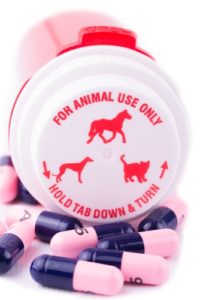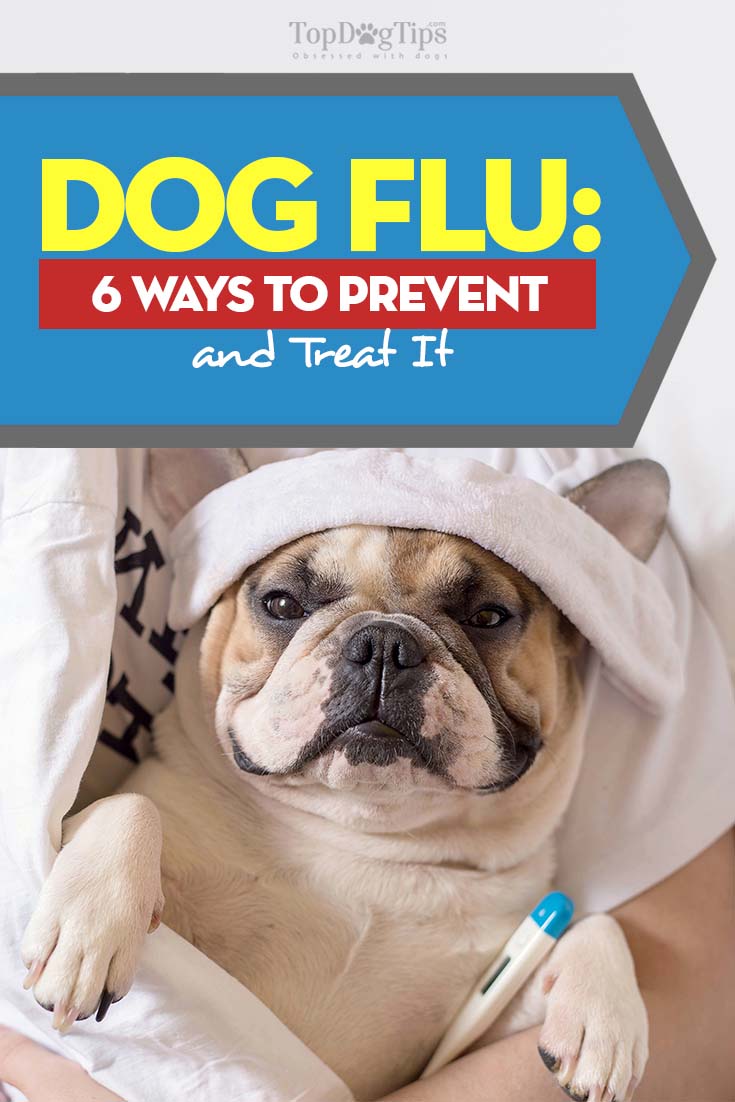Dog flu can be very serious for canines if it’s not treated right away. Dog flu, which is a strain of kennel cough and can sometimes be called kennel cough, is caused by the Canine Influenza Virus or CIV. There is no vaccination against CIV, although some vaccines – like a Bordetella vaccination – can help prevent dog flu symptoms.
If you have ever taken your dog to the groomer, or to doggie daycare, or left your dog at a boarding facility you probably were required to have a Bordetella vaccination for you dog. That’s because kennel cough can be deadly and it spreads very quickly in places like those where there are a lot of dogs.
Just getting the Bordetella vaccination isn’t enough to prevent your dog from catching CIV. This disease is extremely contagious and very serious. You need to be aware of the dog fly symptoms you'll need to look for and what to do if your pet contracts CIV.
MORE: 8 Tips From Animal Experts On Canine Influenza
Dog Flu Symptoms
6 ways to prevent and treat it
The Symptoms Of CIV
The most common signs of CIV are the same symptoms as kennel cough: a very distinctive cough that sounds similar to a goose honking, loss of appetite, lethargy, and runny nose. But, CIV can also cause more symptoms like an intermittent fever and rapid shallow breathing or difficulty breathing.
Antibiotics can help ease the symptoms. However, dog flu can be deadly to canines because of secondary infections. These infections occur when the dog’s immune system is depressed and fighting the viral dog flu.
Preventing Dog Flu
It’s always a good idea to make sure your dog is current on their Bordetella vaccination. That won’t completely prevent dog flu. It’s also impossible to avoid taking your dog to places where there are other dogs, since dogs are social creatures.
The best thing that you can do to prevent your dog from getting CIV and minimize the dog flu symptoms if your pet does catch it, is to keep Fido healthy. Make sure that your pup gets their vaccinations regularly. Feed your dog a good diet that will build up their immune system and make sure they get plenty of exercise.
RECOMMENDED: 25 Most Serious Dog Health Symptoms That Cannot Be Ignored
Treating the Dog Flu
Dog flu symptoms can last for anywhere from 10 days to 30 days. Keeping your dog comfortable and watching your dog’s symptoms closely are very important. If your dog does come down with kennel cough or dog flu caused by CIV the most recommended treatments are:
1. Antibiotics
 Antibiotics won’t get rid of dog flu symptoms, because the disease is viral not bacterial. Antibiotics can help prevent and treat any secondary infections that occur when your dog is recovering from the virus. The secondary illnesses and infections that can occur during the period when the virus is active are the most dangerous.
Antibiotics won’t get rid of dog flu symptoms, because the disease is viral not bacterial. Antibiotics can help prevent and treat any secondary infections that occur when your dog is recovering from the virus. The secondary illnesses and infections that can occur during the period when the virus is active are the most dangerous.
While dealing with the virus, your dog could develop pneumonia or other life threatening illnesses. So, it’s a very good idea to get some antibiotics from your vet to give your dog’s immune system a helping hand while it’s working to get your companion healthy again. Make sure that you give the antibiotics as directed by the vet and don’t stop giving them just because your dog seems to be getting better.
2. Steam
When you have a cold or the flu, do you notice how much a hot shower helps with the congestion, pain and tightness in your sinuses and in your chest? Steam can make your dog feel better too. It helps get rid of some of the congestion and can help soothe the dry cough that is one of the most common dog flu symptoms.
You should invest in a hot steam humidifier and keep it running in whatever room your dog likes to be in, especially at night. You can also bring your dog into the bathroom and run the shower at full blast so the bathroom gets very hot and steamy. Don’t actually put your dog in the hot shower, but let him spend some time in the warm steam in the bathroom to help ease the cough and congestion.
3. A Nutritious Diet
When your dog is sick it is very important that they are eating a healthy diet so that their immune system gets the boost it needs to work harder. But, many dogs don’t have a big appetite when they’ve got the flu. Get some healthy food that will tempt your dog to eat like high quality canned dog food.
You could also cook up some plain hamburger and rice and feed that to your dog. The bland food will be gentle on the dog’s stomach but will still tempt your dog to eat. If your dog shows no interest in food there are prescription foods you can get from your vet that are designed to entice sick dogs to eat.
RELATED: 20 Most Healthy Homemade Dog Food Recipe
4. Lots of Rest
Just like when you are sick one of the best things to alleviate dog flu symptoms is rest. Put your dog’s favorite bed in a quiet and warm place that is out of the way of the household hustle and bustle. If your dog is crate trained or has a large comfy crate fill it with warm soft blankets and don’t be surprised if your dog wants to spend a lot of time in the crate.
5. IV Fluids
 If your dog is sick then they might not be drinking enough water, and getting enough fluids is very important for recovery. Dehydration can cause big problems for an already sick dog. If your dog is not drinking much water, it’s a good idea to take him to the vet for IV fluids on a regular basis.
If your dog is sick then they might not be drinking enough water, and getting enough fluids is very important for recovery. Dehydration can cause big problems for an already sick dog. If your dog is not drinking much water, it’s a good idea to take him to the vet for IV fluids on a regular basis.
6. Regular Vet Visits
Unfortunately the symptoms of more serious infections can mimic the symptoms of the flu. So, while your dog is sick you should be taking your dog to see the vet regularly. The vet will be able to spot any symptoms that are new and treat any secondary conditions before they become a serious threat to the dog’s health.
You also might want to keep a log of any symptoms that you notice at home and let your vet know about them. Catching those symptoms early can enable the vet to treat a secondary problem before it become life-threatening to your dog.
READ NEXT: 4 Bee Products That Can Improve Your Dog's Health (Based On Science)















